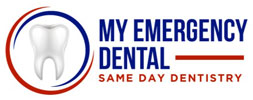How do you suggest removing coffee and tea stains from teeth?
Consume In Moderation And Practice Good Oral Hygiene
Excessive consumption of tea or coffee can indeed stain teeth. Over time, the pigments in these beverages can penetrate your teeth’s porous enamel and are frequently the cause of these stains.
Consider maintaining a decent oral hygiene regimen first. Regular flossing and brushing [with] fluoride toothpaste can help prevent further discoloration and preserve overall dental health.
Also, consider over-the-counter whitening toothpastes and mouthwashes designed to remove discoloration. However, for more significant results, a specialist treatment is recommended. One in-office teeth whitening session, typically involving gels containing hydrogen peroxide or carbamide peroxide and special light sources, can produce significant results.
Dentist-prescribed at-home whitening products are another effective option. Typically, these products include custom-fitted trays and professional-grade whitening gel applied over time. They offer convenience and are capable of producing impressive results, though they may take slightly longer than in-office treatments.
It is important to note that while these methods can help remove stains, consuming tea and coffee in moderation and practicing good oral hygiene are essential for preventing future discoloration. Before undergoing any teeth-whitening treatment, you should consult with a dentist to determine the optimal method tailored to your specific requirements and oral health condition.
Use A Straw
When sipping from a cup, the liquid washes over the teeth before being swallowed. [Therefore], drinking beverages like coffee, tea, or soda with a straw considerably reduces the staining impact.
Using a straw when drinking wine or coffee may seem unusual, but it is beneficial for preventing stains on the teeth. If the liquids barely touch the teeth, people are less likely to experience stains and discoloration.
Brush Your Teeth
Removing any coffee residue that causes discoloration after drinking is one of the best ways to stop stains from developing on the teeth.
After drinking, brush your teeth, or at the very least, swish some milk or water around in your mouth. Coffee and tea contain acids that weaken tooth enamel. As a result, it is simpler to harm enamel during brushing. [Thus], it is frequently preferable to wait an hour or two after ingesting them before brushing.
An Abrasive Compound
Stains on teeth [form] in one of two areas: the surface of the teeth or inside the teeth.
Externally stained teeth [are often] seen in people whose diets contain foods, like coffee, that contribute to staining. A polish with an abrasive compound is the best bet to remove external stains. External polishing compounds are like those the dental hygienist uses at the end of a dental cleaning using the polishing cup, like pumice.
Many kinds of whitening toothpaste that claim to work [use] this external polishing process by including abrasives that are applied [to teeth] through routine toothbrushing. Common ingredients are sodium bicarbonate and activated charcoal.
Internally stained teeth are when fragmented molecules enter between the crystal lattice structure that makes up the mineralized part of our teeth. The only way to remove these stains is through compounds that can go between the crystal rod structure of our teeth and break up those staining compounds.
The most common and natural of those that exist today use hydrogen peroxide and its cousin, carbamide peroxide. There are other less-proven methods to whiten teeth, but they require non-natural compounds.
Others claim to whiten teeth using products that either work through external polishing or that do nothing at all. As dental professionals, we often see falsified before and after pictures of teeth taken in completely different conditions. Buyer beware of teeth-bleaching products claiming too much.
DIY Teeth Whitening
For teeth whitening, hydrogen peroxide and baking soda are frequently suggested. To create a paste, combine two drops of hydrogen peroxide with a small amount of baking soda. Use this paste to brush twice daily to eliminate coffee stains. You can also use trustworthy, ADA-approved, over-the-counter teeth-whitening solutions (toothpaste and whitening strips).
Coconut oil pulling is another effective at-home method for removing stains from your teeth. Coconut oil has antimicrobial properties and aids in tooth whitening. In addition to neutralizing too much acid in your mouth and lessening the impact of the stains, it can eliminate bacteria that accumulate on teeth after eating or drinking.
This is a crowdsourced article. Contributors' statements do not necessarily reflect the opinion of this website, other people, businesses, or other contributors.





